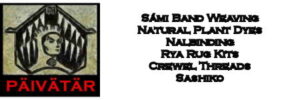The banana plant has been cultivated in Japan since the 13th Century for use in making fabrics and textiles. The tender shoots of the banana plant were harvested and boiled in lye to soften them. The banana fibre was spun into yarn and woven for making kimono and kamishimo.
In Nepal, the trunk of the banana plant was used instead of the shoots. The aged bark or outer layers were soaked in water and allowed to decay to dissolve the chlorofyl leaving the cellulose fibres that are softened into a pulp. The pulp is dried and spun into yarn.
Banana is a strong fibre with a shiny appearance. Banana is a light weight fibre with high moisture absorption as well as quick moisture release, so banana fibre dries quickly. Banana fiber is bio-degradable and has no negative impact on the environment.
With the recent invention of banana fiber extraction machines, banana fibre waste can now be processed into high quality silk grade fibres that are now readily available to handspinners, weavers and crafters.
Banana Fibre Extraction – You Tube
https://youtu.be/nhZW2n-rqys
How to Spin Banana Fibre

Banana fibres are quite long, very fine, silky and slippery. Banana fibre also has a lot of static, so don’t try to tear the fibre into smaller sections, as it has a tendency to fly all over the place. Keep the finely combed top together as much as possible. Pull off a short length 20-30 cm from the length of banana top. I find it easier to begin to spin from the strands that you pulled from the length of top, not from the compressed end as the fibres are open and easier to draft.
The spinning method for banana should be about the same as spinning a fine silk. Use a worsted spinning method and a short forward draw taking care to not let the spin enter the drafting zone and into the unspun top. You can very quickly get a tangled mess. If that happens, stop, break off your end and shake out extra twist from the top bundle.
Because the fibre is quite slippery and doesn’t have much crimp as wool yarns do, in order to keep the yarn together, Banana fibre requires a high twist. I set my wheel onto the smallest whorl at 14:1. I am using a Kromski Sonata wheel for this project.


2 ply Banana Fibre Yarn
160 m per 100 grams
14 TPI
18 WPI

In looking at this yarn sample, I think I should try to spin the banana a bit finer next time.
It only seems right that vegan plant fibres should be dyed with plants – so I will be doing a bit of natural dye sampling as I work with these Flora handspun yarns.
Weld Natural Dye Recipe
Put Weld chips (30 grams) into a mesh bag and let them soak overnight in water.
Heat up the dyebath and add pre-mordanted yarn 100 grams.
Simmer for 1 hour and then turn the dyebath off. Let cool and allow the yarn to sit overnight in the weld dyebath.
Aluminum Acetate Mordant
Aluminum Acetate 5% Solution
Dissolve Aluminum Acetate in hot water and add to dyepot. Add 100 gr yarn into the mordant pot and simmer on warm for an hour. Do not bring to a boil. Turn off the heat and allow the yarn to sit in the mordant overnight.


Spin Flora – Fibre Suppliers
Wingham Wool Work – Plant and Protein Fibres
George Weil – Spinning Plant Fibres
Wild Fibres – Plant Fibres
AMAZON Handspinning Books
The Practical Spinner’s Guide – Cotton, Flax, Hemp (Practical Spinner’s Guides)
Spin Flax & Cotton: Traditional Techniques with Norman Kennedy
The Alden Amos Big Book of Handspinning: Being A Compendium of Information, Advice, and Opinions On the Noble Art & Craft
Resources:
Textile Exchange Online
More Spin Flora not Fauna
Spin Flora – Rose Viscose Cellulose Top
Spin Flora – Bamboo Top
EBAY – Roving
ROVING – US
ROVING – UK
 LONGTHREAD MEDIA VIDEO
LONGTHREAD MEDIA VIDEO
 LONGTHREAD MEDIA SUBSCRIPTIONS
HANDWOVEN MAGAZINE
PIECEWORK MAGAZINE
SPINOFF MAGAZINE
LEARN LONGTHREAD MEDIA
PAIVATAR HANDMADE
LONGTHREAD MEDIA SUBSCRIPTIONS
HANDWOVEN MAGAZINE
PIECEWORK MAGAZINE
SPINOFF MAGAZINE
LEARN LONGTHREAD MEDIA
PAIVATAR HANDMADE
 Paivatar on YouTube
Visit my YouTube channel for how-to craft videos.
Paivatar on YouTube
Visit my YouTube channel for how-to craft videos.
Or Please visit my Channel on Rumble for more how-to videos.
https://rumble.com/Paivatar
LIVE STREAMS - Paivatar Studio
KICK
TWITCH MAKERS&CRAFTING
YOUTUBE
Categories: HAND SPINNING, Vegan Fibers



